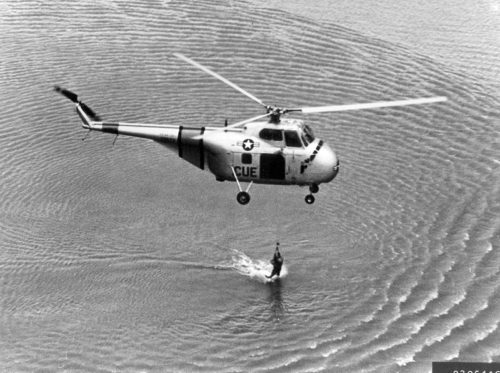October 10 in U.S. military history
1845: Secretary of the Navy George Bancroft founds the Naval School in Annapolis, Md. – later renamed the U.S. Naval Academy. The nation’s second-oldest service academy (the U.S. Military Academy was established by Thomas Jefferson in 1802) is built on the grounds of Fort Severn, which traces its roots to the American Revolution.
1944: Although assigned as a gunnery instructor and advised not to actively seek out combat, Maj. Richard I. Bong, America’s all-time leading ace, volunteers for several missions between Oct. 10 and Nov. 11, shooting down eight Japanese warplanes from his P-38 Lightning fighter. For his actions during this period, Bong is awarded the Medal of Honor. After scoring his 40th victory, Bong is sent back to the states where he becomes a test pilot. He will perish just before the Japanese surrender, when his Lockheed P-80 Shooting Star jet fighter malfunctions and crashes in California.

1950: As the 1st Cavalry Division crosses the 38th Parallel near Kaesong, helicopter crews with the 3rd Air Rescue Squadron apply plasma to a rescued pilot for the first time as they return to base. During the Korean War, members of the Air Force’s 3rd Air Rescue Group will rescue thousands of downed aviators.
1972: The U.S. Air Force begins a fly-off competition between Northrop’s YA-9A and Fairchild Republic’s YA-10A prototypes. The winner would become the service’s new close air support platform, replacing the aging propeller-driven A-1 Skyraider. Northrop’s YA-9 (featured image) lost out to the A-10 Thunderbolt II. While the YA-9 had several advantages over its competitor, the A-10’s engines offered greater survivability and the double tail did a better job of hiding the engine exhaust’s infrared signature.
1985: After Palestine Liberation Front (PLF) terrorists – part of KGB-trained terrorist Yasser Arafat’s Palestinian Liberation Organization – take over the Italian-flagged cruise liner MS Achille Lauro, U.S. Navy F-14 Tomcats intercept their Boeing 737 getaway jet carrying the terrorists to Tunisia, forcing the jet to land at a NATO airbase on Sigonella, Sicily. Once on the ground, the terrorists are brought to custody following a five-hour jurisdictional standoff between an 80-man group of Delta Force and SEAL Team SIX commandos and hundreds of Italian military police.
The terrorists killed one of their hostages and threw his body overboard: wheelchair-bound American citizen Leon Klinghoffer, who flew as a navigator aboard B-24 Liberator bombers in the European Theater of World War II. After leaving Sigonella, PLF founder and the attack’s ringleader Abu Abbas flies to Italy and ultimately makes it to Iraq, where Saddam Hussein protects him from extradition to Italy. He is captured in 2003 by American forces and dies of natural causes in U.S. custody.
1994: In response to two Iraqi divisions massing on the Kuwaiti border, the Air Force deploys warplanes and begins ferrying thousands of soldiers and Marines to the Persian Gulf. Operation VIGILANT WARRIOR winds down by the end of the month when Saddam Hussein withdraws his forces.

Today’s post is in honor of Staff Sgt. Nathan L. Wyrick, who gave his life for our country on this day in 2011 in Ahmad Khan, Afghanistan. The 34-year-old native of Enumclaw, Wa. was assigned to 1st Battalion, 32nd Infantry Regiment, 3rd Brigade Combat Team, 10th Mountain Division. He had previously deployed to Iraq twice and was on his first Afghan deployment.
